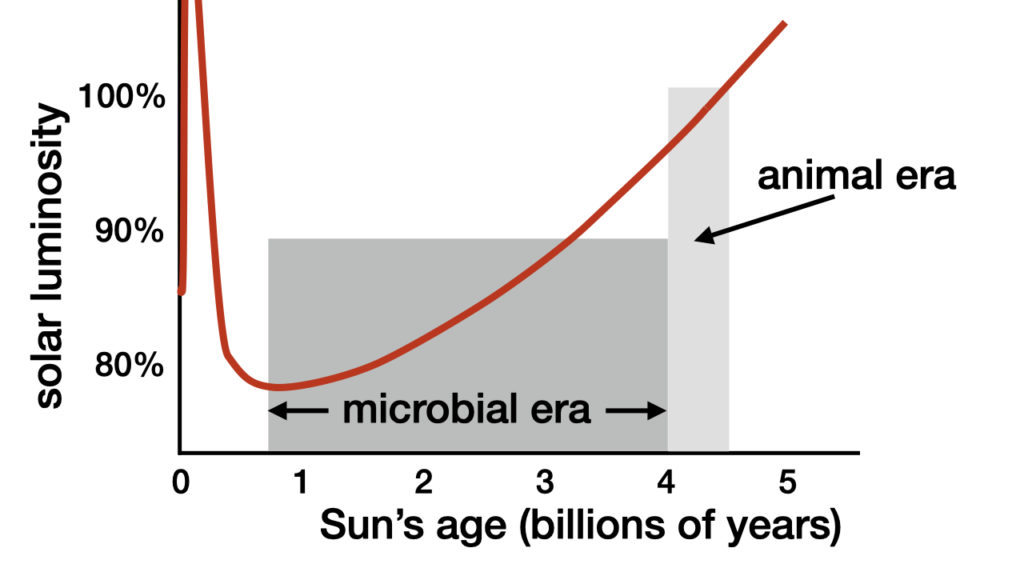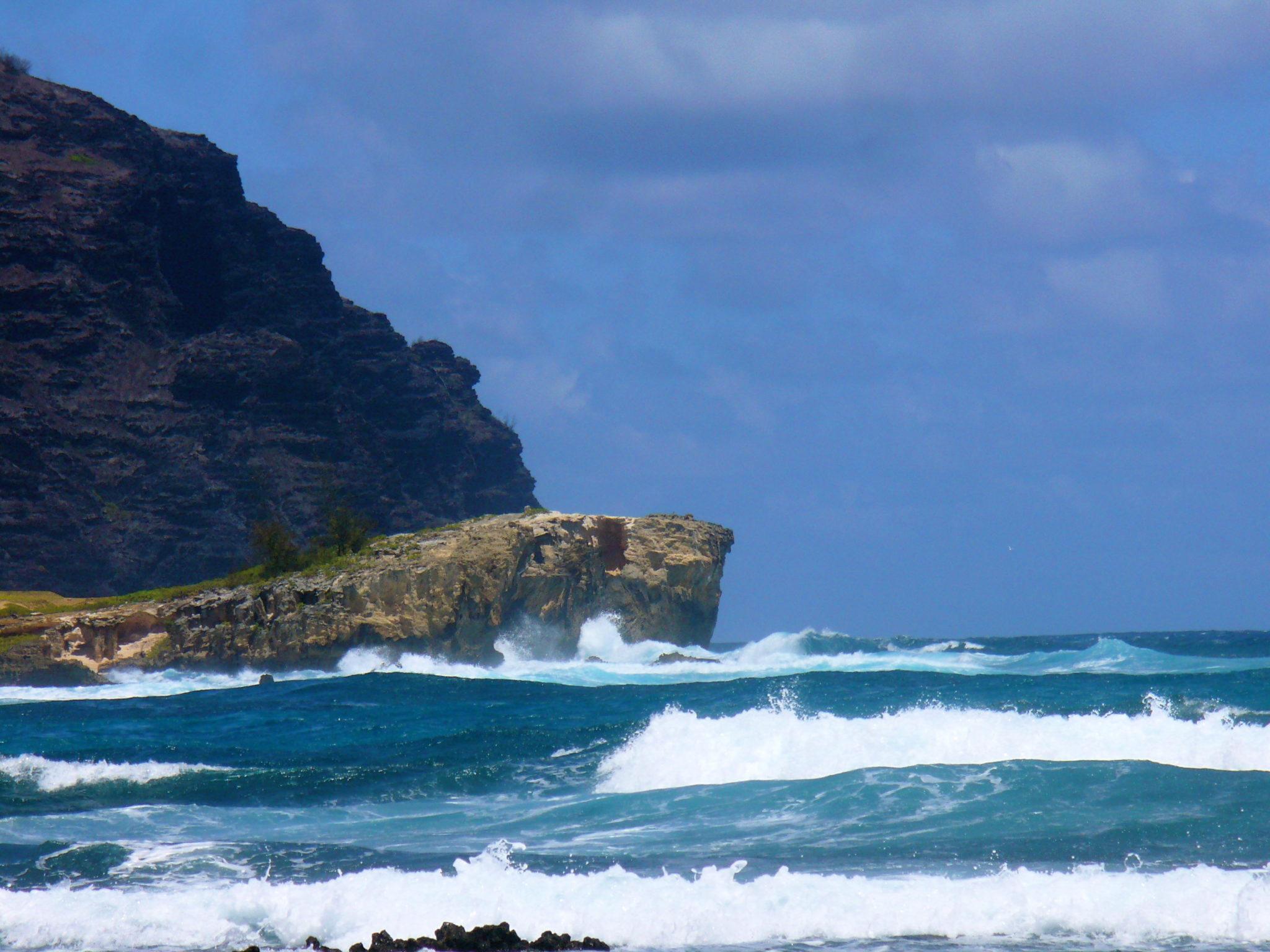A Planet’s Surface Ocean Formation Requires Fine-Tuning
Is Earth the only known rocky planet that shows evidence of a long-standing supply of surface water? Researchers continue to construct models to test for this planetary feature, and the results carry implications for life.
Without surface liquid water there is no possibility for the existence of physical life.1 Liquid water has been present on Earth’s surface in the form of large oceans for the past 3.825 billion years.2 It was briefly present as small lakes and rivers on Mars at multiple latitudes 3.6–3.8 billion years ago.3 And, until six weeks ago, the question of whether it had ever been present on Venus’s surface remained unanswered.
Previous Research on Surface Ocean Formation
Past studies sought to identify conditions that would permit rocky planets such as Earth, Mars, or Venus to possess surface liquid water in the form of oceans, seas, or lakes. These studies assumed that surface liquid water was present in the first place. After all, water (H20/OH) is the third most abundant molecule in the universe after H2 and H3. Though rocky planets start off hot, due to their initial accretion energy (energy gained as a result of planetesimals merging and condensing to form the planet)4, they cool down. In the cooling process, water vapor condenses out from the atmosphere to form oceans. The question, then, was when such water existed and how long it remained on the rocky planet.
Researchers explored this question using one-dimensional numerical climate models.5 These models, however, could not consider the effects of atmospheric clouds and atmospheric circulation patterns. Consequently, the models produced highly uncertain estimates of the timing and duration of surface liquid water.
New Research on Surface Ocean Formation
For the first time, a team of planetary astronomers has constructed and applied three-dimensional global climate models to simulate the conditions on early Earth and early Venus.6 The team of six planetary astronomers led by Martin Turbet demonstrated that for both early Earth and early Venus, water clouds preferentially formed on the nightside (the side of the planet not exposed to the Sun).
The accumulation of clouds on the nightside mitigates the thermal cooling to interplanetary space that would otherwise occur. Furthermore, water vapor is a powerful greenhouse gas. Turbet’s team calculated the net warming effect of the water clouds on surfaces of early Earth and Venus. For early Earth, it is 50 watts per square meter (W/m2). For early Venus, it is 120 W/m2. These values compare with 340.5 and 675 W/m2 of total warming, respectively, on the surfaces of Earth and Venus today.
The team of astronomers also calculated the degree to which both Earth and Venus would need to cool down from their initial high accretion temperatures for liquid water to condense out from their atmospheres to form surface liquid water. The surface of Venus would need to receive no more than 325 W/m2 of warming and Earth no more than 312.5 W/m2.
Venus attained a minimum surface warming of 500 W/m2 about 4 billion years ago. However, this minimum is 54% greater than what is needed for liquid water to condense out from Venus’s primordial atmosphere. Consequently, astronomers are now certain that Venus has never possessed any surface liquid water. They are also certain that, at best, only minuscule quantities of water vapor remained in Venus’s atmosphere. The planet’s atmospheric temperature and its atmospheric electric field operated to quickly desiccate Venus’s atmosphere.7
The reason why Earth possesses the quantity of surface liquid water that it does is that the Sun was fainter in the past than at the present. As the Sun continues to fuse hydrogen into helium in its nuclear furnace, the increasing amounts of helium boost the Sun’s core density, which causes the Sun’s nuclear furnace to burn more efficiently. The figure shows the Sun’s luminosity history. It shows that between 4.3–1.3 billion years ago Earth was cool enough for liquid water to condense out from its atmosphere to form oceans.

When the Sun was accreting and losing large quantities of matter during its first 400 million years, its luminosity changed radically. At one point during its first 100 million years, the Sun’s luminosity rose to nearly twice its present level (off-scale in the diagram).
Credit: Hugh Ross
Implications for Rocky Exoplanets
Astronomers define the liquid water habitable zone as the range of orbital distances of a planet from its host star where the surface temperature of the planet permits the existence of liquid water. For physical life to have any chance of existing on a rocky exoplanet (rocky planet beyond the solar system), it must do more than simply reside in the liquid water habitable zone.
Thanks to the research achievements of Turbet’s team, we now know that additional specific features are required for a planet to possess surface liquid water for long enough to be of any benefit for life. The planet must begin with an atmosphere thick enough for substantial amounts of liquid water to condense out from it. However, the atmosphere must not be so thick that it heats up the planet’s surface above the maximum value permitting liquid water to condense out. On the other hand, the atmosphere must not be so thin that the water condensing out from it quickly freezes.
Likewise, the planet’s host star must be fine-tuned. Its luminosity level, luminosity enhancement history, and luminosity stability must each fall within specified ranges for any of its planets to possibly possess long-lasting surface liquid water.
The bottom line is that the team’s research findings establish that the requirements for habitability are much more restrictive than previously thought, even without taking into account the other dozen known planetary habitable zones.8 Turbet and his colleagues have provided yet more evidence for the rare Earth and rare solar system doctrines.
Design Implications for the Sun and Earth
The team established that a fainter young Sun is necessary for Earth to possess any surface liquid water at all. Today, Earth is too warm by about 9% for any significant quantity of surface water to condense out of its atmosphere. Fortunately, thanks to a fainter Sun in the past (see figure), liquid water did condense out and form the oceans and lakes that cover about 71% of Earth’s surface.
The Sun will continue to get brighter. Within just several million years, the Sun will become so bright that Earth’s oceans, lakes, and rivers will evaporate into our troposphere and leak into the stratosphere, where solar ultraviolet radiation will photodissociate the water. Earth is thus doomed to lose all its water. It will become bone dry.
The good news and the reason why we can flourish on Earth is that our planet has a highly fine-tuned orbit about a highly fine-tuned star. Our star and our planet possess all the exquisitely fine-tuned features to permit surface liquid water to begin to form 4.3 billion years ago and become abundant by 3.85 billion years ago.9 These features meant that the Creator could pack Earth with superabundant, superdiverse life throughout the past 3.825 billion years and thereby endow the planet with resources for the humans he would create. That endowment includes over 76 quadrillion tons of valuable biodeposits—coal, oil, natural gas, gypsum, limestone, marble, and topsoil—plus all the metal ores concentrated by sulfate-reducing bacteria. Thanks to this treasure chest, humans were able to launch and enjoy global high-technology civilization and use that civilization to quickly fulfill the purposes for which God created us.
Endnotes
- Fazale Rana and Hugh Ross, Origins of Life (Covina, CA: RTB Press, 2014), 201–209; Hugh Ross, “Earth’s Surface Water Percentage Is Fine-Tuned for Life,” Today’s New Reason to Believe (blog), Reasons to Believe, March 18, 2019.
- Craig E. Manning, Stephen J. Mojzsis, and T. Mark Harrison, “Geology, Age, and Origin of Supracrustal Rocks at Akilia, West Greenland,” American Journal of Science 306 (May 2006): 303–366, doi:10.2475/05.2206.02; David C. Catling and Kevin J. Zahnle, “The Archean Atmosphere” Science Advances 6, no. 9 (February 26, 2020): id. eaax1420, doi:10.1126/sciadv.aax1420.
- Lu Pan et al., “Voluminous Silica Precipitated from Martian Waters during Late-Stage Aqueous Alteration,” Planetary Science Journal 2, no. 2 (April 2021): id. 65, doi:10.3847/PSJ/abe541.
- L. T. Elkins-Tanton, “Linked Magma Ocean Solidification and Atmospheric Growth for Earth and Mars,” Earth and Planetary Science Letters 271, nos. 1–4 (July 2008): 181–191, doi:10.1016/epsl.2208.03.062; T. Lebrun et al., “Thermal Evolution of an Early Magma Ocean in Interaction with the Atmosphere,” Journal of Geophysical Research: Planets 118, no. 6 (June 2013): 1155–1176, doi:10.1002/jgre.20068.
- Keiko Hamano, Yutaka Abe, and Hidenori Genda, “Emergence of Two Types of Terrestrial Planet on Solidification of Magma Ocean,” Nature 497, no. 7451 (May 30, 2013): 607–610, doi:10.1038/nature12163.
- Martin Turbet et al., “Day-Night Cloud Asymmetry Prevents Early Oceans on Venus But Not on Earth,” Nature 598, no. 7880 (October 14, 2021): 276–280, doi:10.1038/s41586-021-03873-w.
- Hugh Ross, “‘Electric Wind’ Becomes 9th Habitable Zone,” Today’s New Reason to Believe (blog), Reasons to Believe, July 4, 2016.
- Hugh Ross, “Complex Life’s Narrow Requirements for Atmospheric Gases,” Today’s New Reason to Believe (blog), Reasons to Believe, July 1, 2019; Hugh Ross, “Tiny Habitable Zones for Complex Life,” Today’s New Reason to Believe (blog), Reasons to Believe, March 4, 2019; Hugh Ross, “Moon’s Early Magnetic Field Made Human Existence Possible,” Today’s New Reason to Believe (blog), Reasons to Believe, November 16, 2020.
- Hugh Ross, Improbable Planet (Grand Rapids, MI: Baker Books, 2016).






